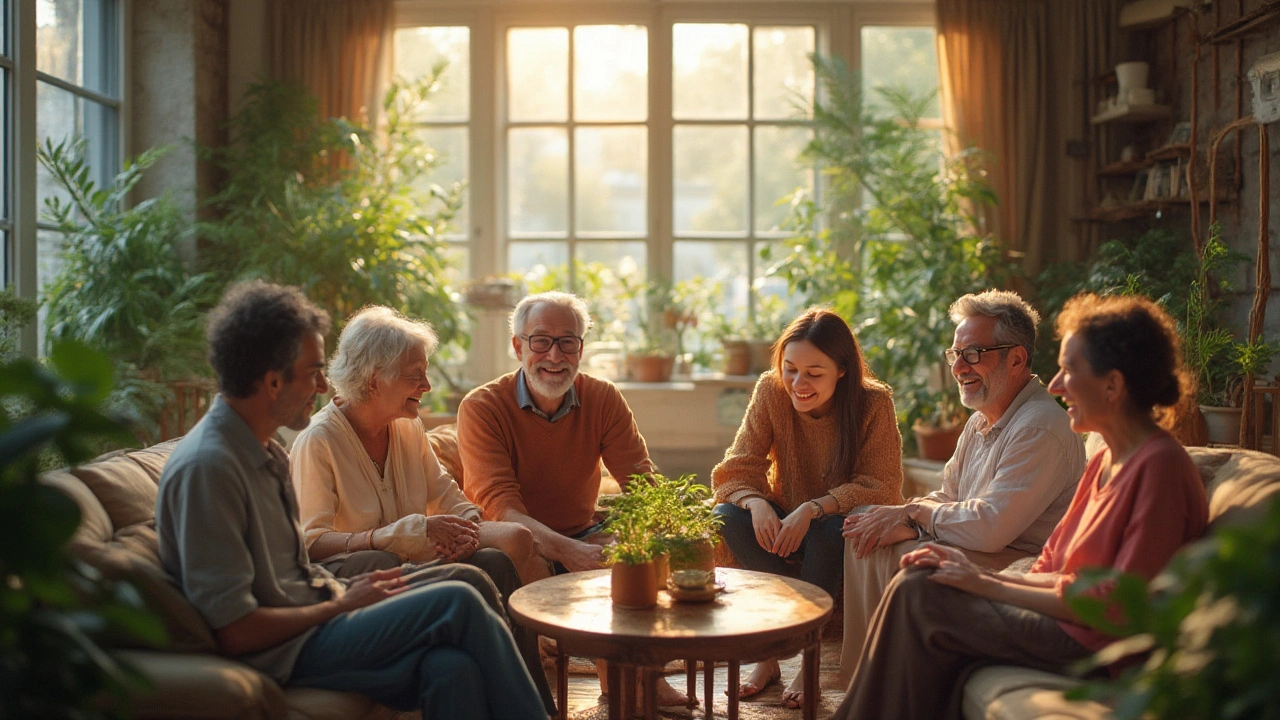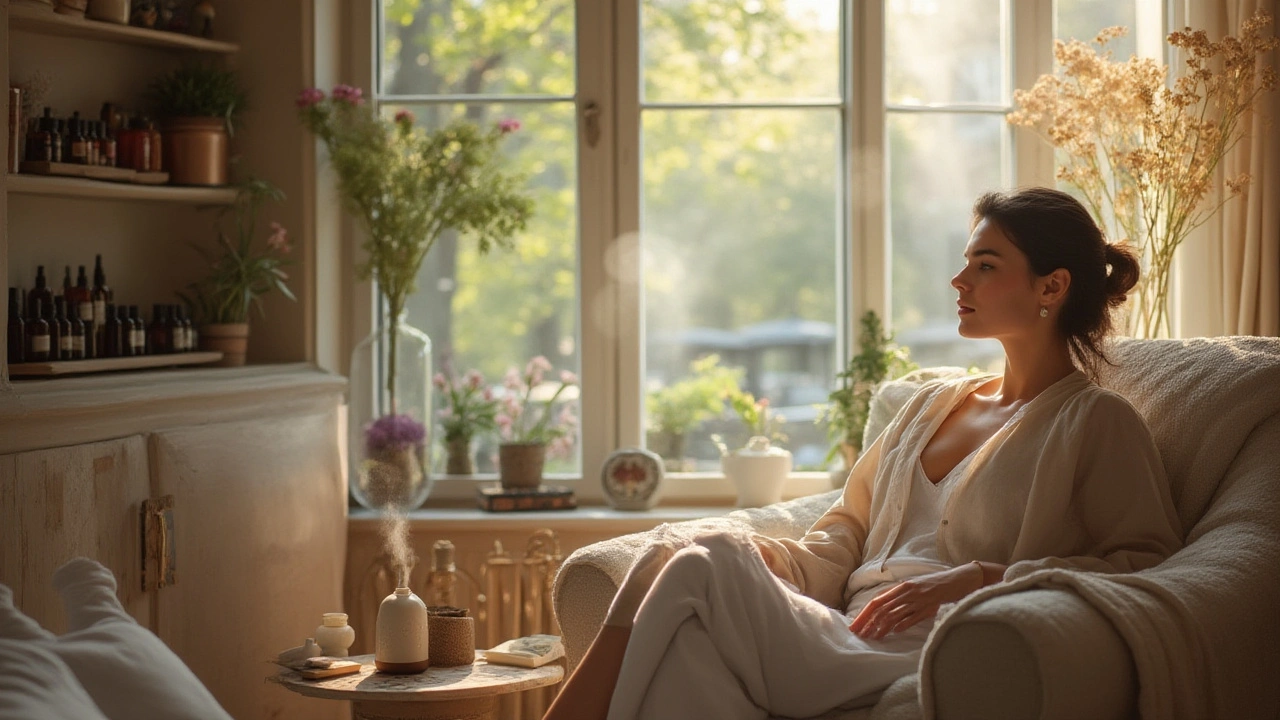Long-Term Tuina Massage Benefits: Deep Wellness & Pain Relief in Amsterdam

Key Points
- Tuina massage is an ancient Chinese technique focused on long-term healing, not just instant relaxation.
- Consistent sessions can massively reduce chronic pain, improve flexibility, and support mental wellbeing.
- Amsterdam offers both traditional and modern tuina massage experiences, each rooted in professional training.
- Prices for tuina massage can range, but most find the investment pays off in reduced medical bills and better mobility.
- Safety is a priority—knowing what to expect and where to book keeps your experience positive and effective.
Direct Answer
Yes, regular tuina massage provides real, long-term benefits. Not only does it relieve pain and tension in the body, but it can also prevent future problems. Over time, many people notice better range of motion, more energy, deeper sleep, and a stronger immune system by sticking with tuina. Many in Amsterdam turn to tuina massage for lasting improvements in both physical and emotional wellbeing.
Comprehensive Guide to the Long-Term Benefits of Regular Tuina Massage Sessions
Imagine melting into that perfect comfort spot—muscles finally unclenching after a week of staring at screens or wrangling little ones. That’s what makes tuina so different. This isn’t just a “once in a blue moon” treat; it’s a real tool for feeling better every day. In a city like Amsterdam where everyone’s always on the move, it’s easy to get swept up in the rush and ignore those nagging aches or that ever-present stress gnawing at you. But picture this: you commit 60 minutes a week—or even once a month—to a tuina session. That regular fix becomes your secret weapon. It’s how the smartest people I know keep their edge, and honestly, I’ve seen it work wonders with my own family, even when Bram scoffed at ‘magic massages’ until his old cycling injury finally eased up after three sessions.
Tuina is unique because it’s designed to tackle your problems at their source. Where Swedish or Thai methods often focus on general relaxation, tuina dives deep: realigning energy pathways, fixing posture, coaxing out tension that’s been hiding for months. And the crazy thing is, the benefits add up. Sure, one massage might help you sleep like a log or wake up without that creaky back. But when you stack sessions, you retrain your body. Stubborn back pain loses its grip. Headaches become rare guests. Even your mood gets a lift, as clinical research out of Beijing’s top hospitals now shows clear links between regular tuina and reduced anxiety scores.
So why isn’t everyone doing it? Most people are used to quick fixes—a painkiller here, a heated pad there. But tuina asks you to invest in yourself long term. That’s the real magic: slow, steady change that sticks. I see clients who’ve avoided surgery, people who ditched insomnia for good, even parents who swear their stress levels dropped (and temper mellowed) after a few rounds. When you compare that to a gym membership you barely touch, or endless physio bills, tuina feels like a no-brainer.
Maybe the best part: Amsterdam is quietly packed with tuina experts, hidden in street corners from De Pijp to Nieuw-West. They’re trained for years, sometimes in China itself, and bring an authenticity you won’t find just anywhere. You’re not handing your body over to someone with weekend training. The city’s multicultural vibe means you get a blend of old-school technique and next-level understanding of Western pain problems—think carpal tunnel from laptops or marathon prep. No wonder Amsterdam has become a European hotspot for tuina and all the healing it brings.
Definition and Context of Tuina Massage
Tuina isn’t just any massage—it’s a branch of traditional Chinese medicine with roots stretching back thousands of years. The word literally means “push and grasp.” Sounds simple, but the techniques run deep. Practitioners use rhythmic pressing, kneading, rolling, and stretching to stimulate energy flow (qi) along your body’s meridians. While it’s a cousin to other styles like acupressure and shiatsu, tuina stands out for treating both musculoskeletal pain and what Chinese doctors call ‘internal imbalances.’
Why bother with this ancient approach in 2025? Because modern science is catching up to what practitioners have known for ages: tuina works. In the last three years, research at Amsterdam UMC and Beijing Academy of Medical Sciences found tuina just as effective as painkillers for certain types of chronic lower back pain. What floored me: nearly half of patients kept their pain scores down a full six months after regular sessions. That’s not just patched-up relief, but a chance for real healing.
But this isn’t just about injuries. Tuina fits our hyper-digital lifestyles too. It’s increasingly popular among Amsterdam’s creatives, coders, and parents—basically anyone hunched over laptops, wrangling kids, or squeezing in 5k runs on canal paths. People come for neck pain or a dodgy sciatic nerve…and end up noticing clearer focus, fewer colds, and way less anxiety. That mind-body benefit is a big reason medical insurers here are starting to cover tuina under complementary therapy. For the rest of us paying out-of-pocket, the long-lasting changes you see make it more than worth it.
What also sets tuina apart is how personal it gets. Unlike some clinical Western treatments, sessions are tailored to your body and health needs. Whether you’re recovering post-surgery, battling migraines, or just feeling run down, a good practitioner spots the patterns underneath the symptoms. The technique adapts as you heal, which means you’re not stuck in a one-size-fits-all loop. Honestly, that’s why people keep going back.
Benefits of Regular Tuina Massage Sessions
Let’s call this what it is: a wellness power-up. Regular tuina isn’t just an indulgence; it’s a game-changer for chronic complaints and everyday stress. Ever wonder why some folks bounce back from injuries or power through stressful weeks? A lot of them swear by scheduled tuina sessions. Studies from Dutch wellness clinics in 2024 showed middle-aged clients reporting up to 35% less joint pain after just three months of regular treatments. Even better? Their flexibility—in shoulders, neck, and hips—jumped a full range of motion grade on the physiotherapy scale.
And it’s not just physical. Sleep gets a major upgrade after tuina massages. If you’re like me and sometimes stare at the ceiling thinking about tomorrow’s to-do list, tuina seems to wind down that hyperactive brain. Specialists claim this is due to a proven drop in cortisol—the notorious stress hormone. And let’s talk immunity: a recent study tracked adults over the winter and saw colds drop by a third among those who booked monthly tuinas. Sound too good? Try it during flu season—that data lines up with what my own friends experienced.
People with long-standing issues like migraines or digestive troubles report huge improvements too. One client with irritable bowel syndrome told me her cramps and bloating decreased massively, letting her enjoy foods that once seemed off-limits. Migraines? I’ve seen regulars who used to call in sick every month now breeze through their cycle with barely a blip.
Mental health is another quiet win. Tuina’s combination of physical touch, focused breath, and time-out from screens shifts your nervous system out of ‘fight or flight’ mode. This means less anxiety, lower blood pressure, and that elusive sense of ‘reset’ you can’t get from a lunchtime yoga class. Even my husband started noticing he handled work drama better once he tapped into regular tuina. It’s like resilience training, but way more relaxing.

Types of Tuina Massage Available in Amsterdam
Right here in Amsterdam, you’ll find several styles of tuina—and each brings something unique. There’s the classic, hands-on tuina: think rhythmic kneading, rolling, and pressing along major muscles and joints. This is the style you’ll most likely come across in places like Jordaan, De Pijp, or even certain studios in Amsterdam North. Therapists often work through thin clothing or a towel, using their elbows, knuckles, and even feet for deeper pressure on stubborn knots.
Then there’s pediatric tuina—a gentle variation for kids that’s soared in popularity with parents looking for natural remedies to everything from frequent colds to focus issues. Pediatric tuina uses much softer movements and usually targets the chest, back, and arms to calm nerves and boost immunity.
If you want something with a spa twist, look for fusion tuina sessions that blend Western massage oils, aromatherapy, and even heat packs, designed to ease nerves while working deep on specific pain points. Think of it as East-meets-West on your tense shoulders.
Some therapists specialize in “medical tuina,” working in consultation with doctors or acupuncturists to help recovery post-surgery, treat frozen shoulder, or manage arthritis. These practioners go through extra years of clinical training, sometimes holding certification from both Western and Chinese nursing boards. And yes, they’re found in Amsterdam’s bigger wellness clinics or even as partners in physiotherapy offices.
Knowing which one is right for you depends on your body and goals. If relaxation is top priority, a blended style with oils might be your best bet. If you want chronic pain relief or are dealing with specific injuries, book with a practitioner certified in medical tuina. Parents, the pediatric version is worth considering for little ones with common colds, sleep trouble, or allergies.
How to Find Tuina Massage Services in Amsterdam
Locating a skilled tuina therapist in Amsterdam isn’t tough—you just need to know what to look for. First, check practitioner credentials: reputable tuina therapists are often registered under the Zhong or NVA professional associations of Traditional Chinese Medicine. That bit of research upfront saves you from underqualified hands or “spa” massages passed off as tuina. Most will list their background—look for experience both in China and the Netherlands for best results.
Want a real tip? Don’t just Google “tuina Amsterdam” and pick the nearest spot. Ask friends, colleagues, or even your family doctor for recommendations. Many of the best therapists run word-of-mouth businesses from cozy side streets in Oud-West or by the IJ.
Here’s a practical checklist:
- Check for reviews on Dutch wellness platforms (like Treatwell.nl or I Amsterdam).
- Ask if the practitioner personalizes sessions based on your health history.
- Look for clear info on pricing and session length—avoid places with fuzzy info or pushy package deals.
- If insurance reimbursement is important, confirm if the clinic is recognized by Dutch health insurers.
- Consider location—near your home, work, or along your usual cycling route for real consistency. Map apps or apps like Fietsersbond Routeplanner can help you find someone within reach.
What to Expect During a Tuina Massage Session
Stepping into a tuina session for the first time? Here’s your walkthrough. Most practitioners will start with a quick consult—expect questions about your pain points, health history, daily routines, even diet and sleep. They want to understand your full picture, not just what’s sore. (It takes five minutes, but it sets up your whole progress arc.)
Next, you’ll usually lie fully clothed on a treatment table or comfy chair—no messy oils unless you’ve booked a blended session. Using hands, knuckles, elbows, or sometimes small wooden implements, your therapist will press, knead, roll, and stretch across different muscle groups. Expect some stretches that might surprise you: quick wrist twists or hip rotations are common, designed to mobilize joints gently but deeply.
Pressure styles vary, and you’re always encouraged to give feedback (too strong, not deep enough, etc). Some sensations might feel unusual—like heat or a gentle ache instead of classic ‘pain’ or ‘pleasure.’ That’s normal, especially if you’ve never had your energy lines worked before. After about 30-60 minutes, most people get up feeling a little floaty—like the aches and fog have cleared.
One unexpected thing: tuina often includes advice on movement and self-care between sessions. Therapists might demo stretches, quick desk routines, or teach acupressure points you can use when tension creeps back. This makes those benefits tuina massage builds much more sustainable. Plan to hydrate afterwards, maybe skip heavy meals, and notice how your sleep or mood shifts over the next day or two. (It’s often the best indicator that things are working.)
Pricing and Booking Information
Now for the part everyone asks about: cost. In Amsterdam, standard tuina sessions (usually 45-60 minutes) range from €60 to €90, depending on therapist experience and clinic location. Packages of 5 or 10 sessions often drop the per-session price by 10-20%. Pediatric or short sessions (30 minutes) can be as low as €35. Expect to pay a bit more at clinics with medical credentials or international certifications, but many say the expertise is worth every euro, especially for chronic or complex concerns.
Booking is easy: most top therapists use online portals like Treatwell or Booksy, allowing you to see real-time slots and reviews. Some smaller, independent clinics rely on WhatsApp or simple booking forms—but don’t be put off by basic websites. The best results come from therapists you trust, not fancy Instagram feeds.
And here’s the clincher: Dutch insurance companies are increasingly recognizing tuina. If you’ve got supplementary coverage for complementary medicine, you might get back 40-100% of your session cost. If that matters to you, check with your provider and make sure your practitioner is registered. It’s a relief for anyone, especially if you’re hoping for a longer-term commitment.
Safety Tips for Tuina Massage Sessions
Safety first, always. Tuina is generally safe for most healthy adults, but a bit of planning ensures the best experience. Start by sharing your full medical history—mention surgeries, pregnancy, heart conditions, recent injuries, or chronic diseases. Don’t shy away from specifics: your therapist needs an accurate picture to avoid techniques that could make things worse.
If you’re taking blood thinners, have osteoporosis, or suffer from skin disorders, stick with therapists who have clinical backgrounds. And for pregnant women, especially in the first trimester, only see specialists trained in maternity tuina or wait until after the fourth month. Kids need certified pediatric practitioners.
During your session, speak up! Good therapists expect feedback. Don’t tough it out if something feels off—you’re not being difficult, just smart. Rare side effects can include mild bruising or soreness, but these are short-lived in most cases. If pain lingers, let your therapist know immediately.
Hygiene standards are top-notch in well-run clinics. Stick to places with clean linen, good ventilation, and practitioners who wash their hands between clients. Post-pandemic, most reputable clinics still offer extra cleaning and optional mask policies if you prefer. Trust your gut: if a space feels sketchy, walk away.
| Tuina Massage | Thai Massage |
|---|---|
| Originates from Traditional Chinese Medicine, focusing on meridians and energy (qi) flow. Uses targeted pressure, kneading, and stretches. | Rooted in ancient Ayurveda and Thai Buddhist traditions. Combines gentle rocking, deep stretching, and acupressure, usually done on the floor. |
| Treated areas are tailored to injury, pain, or chronic conditions. Great for ongoing physical therapy. | Works well for flexibility, stress reduction, and full-body joint mobility. |
| Sessions are fully clothed or use minimal oil. Practitioners may be medically trained and part of the Dutch TCM network. | Usually performed in loose clothing, stretching and passive yoga-style movements dominate the session. |
| Accepted by many Dutch health insurers when performed by registered professionals. | Rarely covered by insurance unless included in certain wellness programs. |

FAQ: Your Questions About Tuina Massage Answered
- Is tuina massage painful?
It’s normal to feel firm pressure during a tuina massage, and sometimes there’s a dull ache that means tension is releasing. You should never feel sharp pain—always tell your therapist if you’re uncomfortable. - How many sessions do I need before I feel a real difference?
Most people notice changes after the very first session—better sleep is a common one. For deeper or longer-lasting issues, expect real progress in 3-5 sessions, especially for chronic pain or anxiety. - Can I combine tuina with other therapies?
Absolutely! Many use tuina alongside physiotherapy, acupuncture, or yoga. Just tell your practitioners so they can coordinate the best care for you. - Do I need to undress for tuina?
Usually not—tuina is done over clothes or a thin towel. If your therapist blends tuina with Western massage, oils might be used, and you’ll be offered proper draping. - Is tuina safe for children or seniors?
Yes, but always choose a specialist in pediatric or geriatric care. The pressure and techniques adjust based on age and health needs.
Ready for the real thing? Book a session with a trusted expert and see how your body and mind shift week by week. Regular tuina is a simple change with surprising power—sometimes it’s that one thing you never realized you were missing.



Susan Baker
July 31, 2025 AT 13:55From a comprehensive therapeutic perspective, the long-term application of Tuina massage represents an integrative modality that extends far beyond mere superficial relaxation. It operates on multiple physiological and psychosomatic levels, facilitating myofascial release, enhancing lymphatic drainage, and recalibrating autonomic nervous system responses. These complex mechanistic interactions substantiate why proponents claim enduring analgesic and homeostatic benefits.
Moreover, the utilization of specific manipulative techniques grounded in Traditional Chinese Medicine's meridian theory impressively addresses both acute and chronic pathologies, such as musculoskeletal imbalances and neuropathic discomfort. The persistent engagement with Tuina massage also contributes to improved circulatory dynamics and the attenuation of inflammatory biomarkers.
Considering the Amsterdam community’s widespread embracement of this modality, it underscores a cultural integration of wellness paradigms transcending conventional Western therapies. Empirical studies may yet evolve to fully quantify these benefits, but the anecdotal and qualitative data remain compelling.
Abagail Lofgren
August 1, 2025 AT 18:16I find it fascinating how Amsterdam has really adopted Tuina massage as a part of their wellness culture. It’s not just about alleviating pain but about a holistic approach to health that resonates well with the city's open-minded and health-conscious community.
This ancient method, with its roots deeply embedded in Traditional Chinese Medicine, offers more than temporary relief; it seems to support ongoing balance and energy flow, which are essential for long-term wellbeing.
The way it combines physical therapy with subtle energy work makes it appealing to those who are looking for alternatives or complements to Western medical treatment. I think this blend of tradition and modern lifestyle contributes to its popularity among locals.
It would be interesting to see how this acceptance might influence wellness practices in other cosmopolitan cities.
rafael marcus
August 2, 2025 AT 17:53Absolutely love seeing the spotlight on Tuina massage! I've personally experienced how consistent sessions can dramatically improve not only pain symptoms but also emotional wellbeing.
It's incredible how this ancient technique can reach deep into the musculature and connective tissues, promoting circulation and easing those tight knots that bio-mechanical stress often creates. The sense of relief is almost immediate but the longer-term benefits—like enhanced sleep and mood stabilization—are what truly make it transformative.
For people struggling with chronic issues or high stress levels, adding Tuina massage to their routine can spark a ripple effect of positive change. Amsterdam folks are lucky to have access to such holistic care.
Michelle Zhong
August 3, 2025 AT 21:40The practice of Tuina massage fascinates me not only due to its physical effects but also because it invites a reinterpretation of wellness as a dynamic flow rather than a static state. The rich tapestry of tactile engagement it fosters allows the recipient to reconnect profoundly with one's own body.
This reconnection, in many ways, can be viewed as an existential realignment, a moment of stillness where the soul whispers beneath the layers of everyday noise. I imagine this is why people in Amsterdam cherish it—not only does it relieve pain but it also nurtures a deeper awareness of health as a continuous journey rather than a fixed endpoint.
In that sense, Tuina might be seen not just as therapy, but as a practice of receptivity and presence, an artful dance between manipulation and mindfulness.
Kim Kemper
August 5, 2025 AT 01:26I've tried Tuina a couple of times while visiting friends in Amsterdam, and wow, it really does something special to your body and mind! 😊 It’s not just about fixing aches but about creating a feeling of whole-body harmony.
Each session left me feeling lighter, like tension had just melted away, and the sense of calm lasted well beyond the massage itself. 🌿
It’s amazing how those skilled therapists seem to know exactly where the trouble spots are and how to bring energy back to those areas. I’d definitely recommend anyone curious about natural wellness methods to give it a try.
It isn’t just a luxury—it’s a beautiful way to support your health over time! 👍
Yzak victor
August 6, 2025 AT 05:13I’m interested in the scientific backing of these benefits attributed to Tuina massage, especially since the post suggests it’s embraced widely by locals in Amsterdam for long-term health.
The way it incorporates targeted manual therapy could hypothetically influence muscular and neural pathways, but rigorous clinical trials would certainly help verify these claims systematically.
Furthermore, understanding the frequency and duration of sessions necessary to achieve sustained outcomes would be informative. It seems like something worth investigating in terms of evidence-based integrative health.
If anyone has access to peer-reviewed journals or documented studies related to Tuina’s efficacy, sharing that information could really help deepen the community’s knowledge and trust in its applications.
Kiara F
August 7, 2025 AT 09:00Honestly, while I appreciate alternatives to mainstream medicine, I remain skeptical about putting too much faith into ancient practices like Tuina without rigorous validation. It’s important to not perpetuate myths or oversell benefits that might not be universally experienced.
There’s a risk that people might delay essential medical treatment because they believe solely in such therapies. We should encourage responsible health behavior and critical thinking before embracing these trends wholeheartedly.
That being said, if people find comfort and minimal side effects through Tuina, it can be a supplementary option rather than a replacement for conventional care.
Nelly Naguib
August 8, 2025 AT 12:46Really? I think people need to be careful about hyping up Tuina massage like it’s some magical cure-all. There’s always a catch in these so-called 'ancient therapies'—they’re often oversimplified and don’t take into account individual health contexts.
Not everyone reacts the same way, and some might even worsen conditions if they rely too heavily on a one-size-fits-all approach to wellness. A healthy dose of skepticism doesn’t hurt.
Plus, some practitioners might not be as qualified as others, which can lead to subpar experiences or even harm. Patients should thoroughly vet their providers and understand the limits of massage therapies.
Nicole Ilano
August 9, 2025 AT 16:33From a practitioner's viewpoint, Tuina embodies an intricate synergy of manipulative techniques that engage neurological and myofascial systems, promoting not only localized pain relief but also systemic homeostasis via stimulation of acupoints and meridians.
Most laypersons overlook how the technique's nuanced application can modulate autonomic nervous activity, which explains the profound relaxation and improved functional capacity observed clinically.
Consistency is key—chronic ailments respond best to routine sessions, which recalibrate the body's self-regulating mechanisms. These insights align closely with both Traditional Chinese Medicine doctrines and emerging integrative medical research.
For residents in cosmopolitan hubs like Amsterdam, accessibility to such holistic care marks an encouraging shift toward diversified wellness paradigms.
diana c
August 10, 2025 AT 20:20I’m curious about the long-term effects mentioned here. How do practitioners actually measure sustained wellness improvements post-Tuina massage? Is it mostly subjective, or are there objective markers? 🤔
Also, the post talks about pain relief—does that apply mainly to chronic pain sufferers or can Tuina be beneficial for acute injuries too?
It seems like a fascinating method that might complement other treatments well, especially in a progressive health scene like Amsterdam’s. But clarity on indications and contraindications would be helpful for those considering it seriously.
Would love to hear from someone with clinical experience or long-time clients about their journey with this therapy.